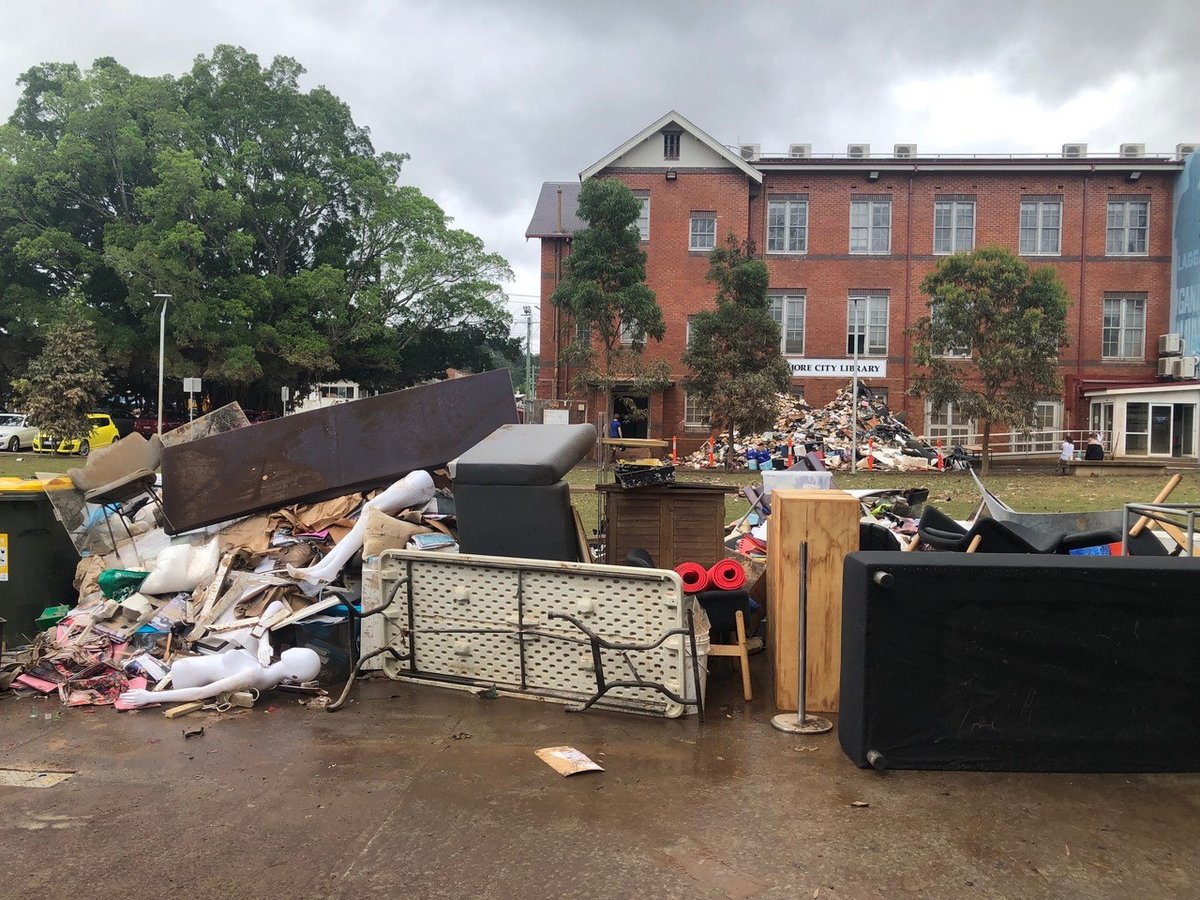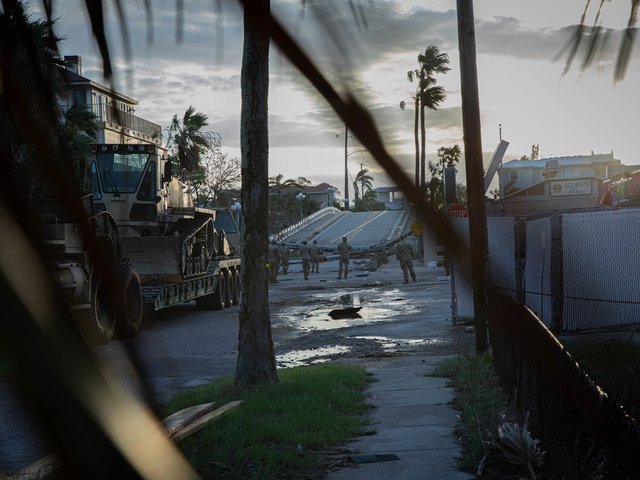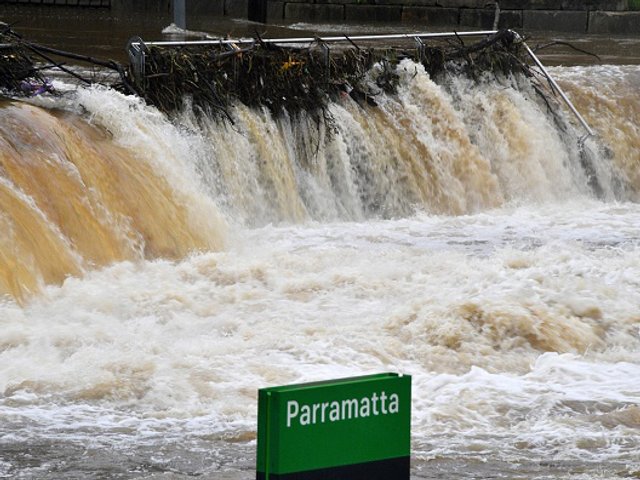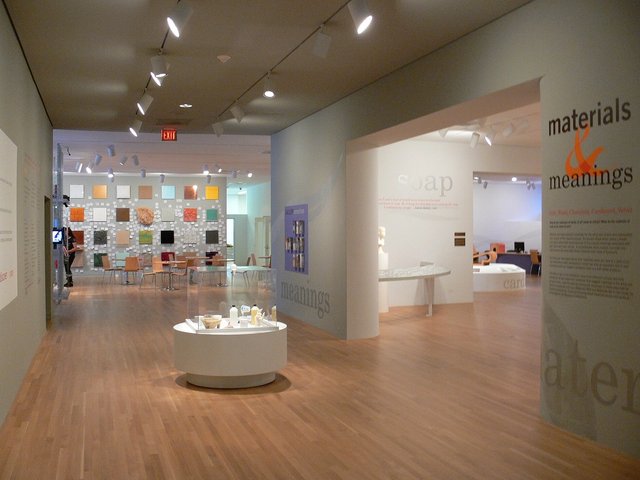After two major floods in the past five years, more than resilience is needed to keep the once-thriving arts and cultural precinct open in Lismore, Australia.
A week ago, an estimated 700mm of rain had fallen on the New South Wales town in less than 30 hours, pushing the Wilsons River to record levels. Two-storey buildings were plunged underwater as low-lying areas were inundated, causing catastrophic damage to property and displacing residents in the town of 44,000 people.
People had to be “rescued off roofs”, the artist Marian Tubbs tells The Art Newspaper. She estimates that at least 1,000 people are currently housed in emergency accommodation at Southern Cross University, where she lectures in art and design.
According to Jane Fuller, the executive director of Arts Northern Rivers, an arts advocacy organisation based in Lismore, the “epicentre of the floods” was the cultural precinct, which houses Lismore Regional Gallery, the artist-run Elevator gallery and studios as well as the library and the music conservatorium.
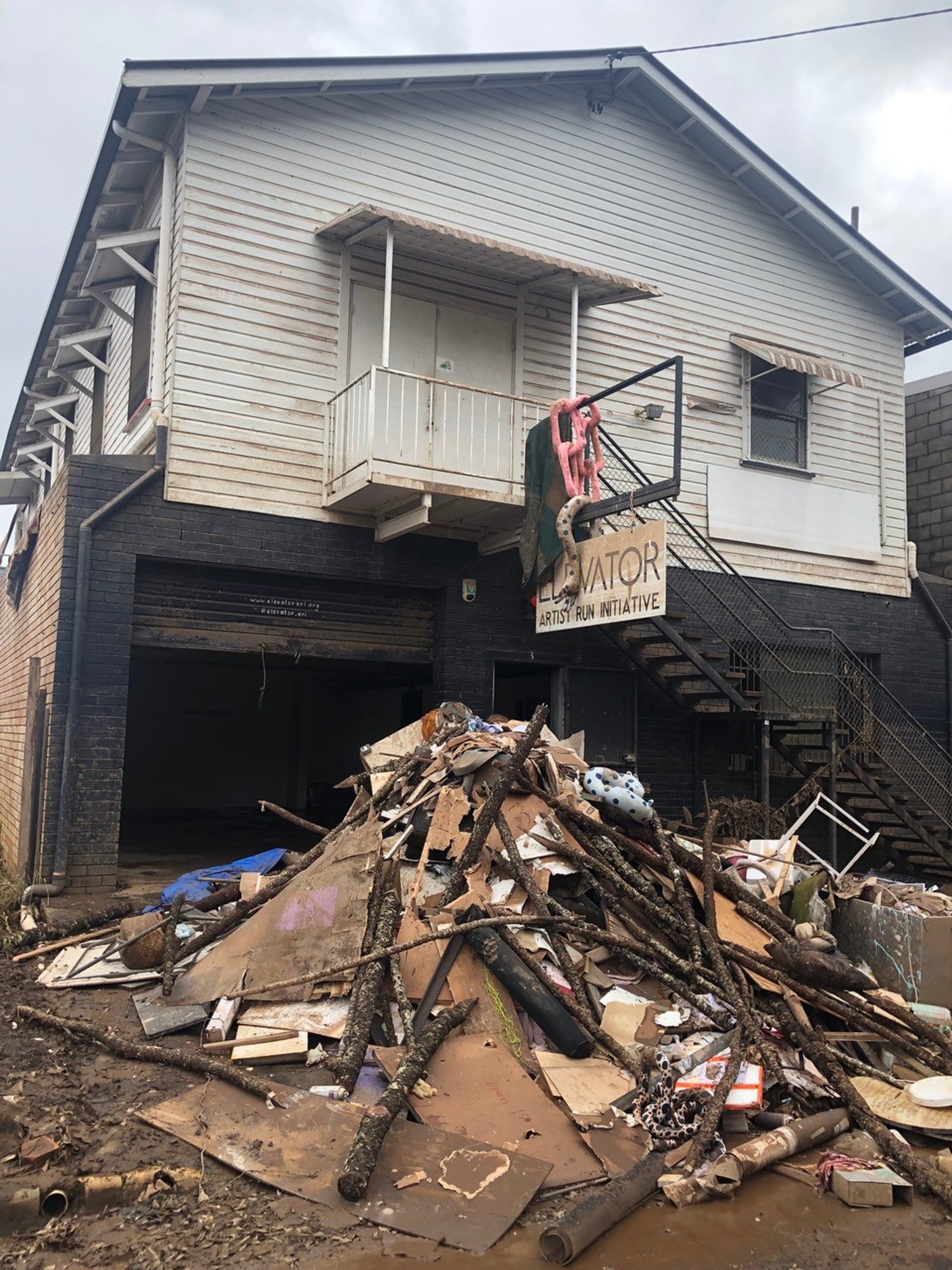
The exterior of the Elevator artist-run gallery space and studio complex in Lismore, New South Wales Photo: Jane Fuller, Arts Northern Rivers
At their peak, floodwaters reached the ceiling of the second floor of the Lismore Regional Gallery, where Arts Northern Rivers is based. The impact was worse than the last “once-in-a-century” flood in Lismore, in March 2017, when Cyclone Debbie wreaked havoc on parts of southern Queensland and northern New South Wales. On that occasion, the waters reached the ceiling of the gallery’s ground floor.
To guard against damage, staff and volunteers relocated collection items, a touring exhibition of rugs from Afghanistan and the handcrafted Hannah Cabinet valued at over A$1.4m upstairs. “[We thought that if we] raise up to past the 2017 flood, then we should be well and truly safe,” Fuller says. But their efforts were not enough.
“The damage is incomprehensible,” Fuller says. According to Ashleigh Ralph, the director of Lismore Regional Gallery, “no one knew” just how high the water would go. “By 6am [on 28 February] we realised that the flood was actually going three metres into the second floor.”
As the waters subsided Ralph returned to discover “artwork mixed with rubbish, mixed with mud” throughout the building. Nevertheless, she is optimistic that parts of the collection “can be restored” by conservators working offsite.
For Ralph, the gallery’s losses pale in comparison to the community. “Many artists have lost their home. Some of my staff lost everything,” she says.
Arts Northern Rivers has launched a A$40,000 crowdfunding campaign to provide immediate assistance to independent artists and arts groups in the region suffering from losses linked to the floods.
Meanwhile, as the storm cell headed towards Sydney on 2 March, authorities warned those in flood-prone areas to prepare to evacuate. For many it was the second flood warning in less than a year.
In western Sydney, the New South Wales state government came under fire when images posted online showed the controversial A$915m Powerhouse Parramatta museum construction site submerged by water from the Parramatta River. Torrential downpours also caused flooding at the river bank site in March 2021.
Some speculated that the opening of the 23rd Biennale of Sydney would be postponed but the Columbian-born artistic director Jose Roca confirms that the event is “going ahead as planned” this weekend. “Extreme weather conditions are built into our planning, and the effect [of the storm] has been fairly minimal,” he says.
According to Roca, the heavy rain has only delayed the arrival of some works from interstate. He adds that some of the participating artists have been personally affected by the floods, however, and are now “helping out in their communities”. In a curious twist, Roca’s edition of the Biennale is titled Rivus, which means “stream” in Latin, and is billed as featuring “rivers, wetlands and other salt and freshwater ecosystems” in dialogue with artists. The Biennale of Sydney opens on 12 March and will run until 13 June.


